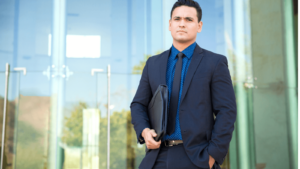When you’re injured due to someone else’s negligence or intentional actions, pursuing a personal injury claim can help you recover damages for medical expenses, lost wages, and pain and suffering. However, these claims are governed by strict legal timelines known as statutes of limitations. Understanding these time limits is crucial; missing a deadline can bar you from seeking compensation altogether. This article delves into the intricacies of the statute of limitations in personal injury cases, helping you navigate the legal landscape more effectively.
What Is the Statute of Limitations?
The statute of limitations is a law that sets the maximum time after an event within which legal proceedings may be initiated. In the context of personal injury, it dictates how long an injured party has to file a lawsuit against the party responsible for their injuries. These laws serve several purposes:
- Fairness to Defendants: They protect potential defendants from facing indefinite threats of litigation.
- Evidence Preservation: Over time, evidence can be lost, and memories can fade. Time limits encourage timely prosecution when evidence is most reliable.
- Judicial Efficiency: They help courts manage caseloads by encouraging timely filing of claims.
General Time Limits for Personal Injury Cases
In the United States, the statute of limitations for personal injury cases typically ranges from one to six years, depending on the jurisdiction. Most states set the limit at two to three years from the date of the injury. For example:
- California: 2 years
- New York: 3 years
- Texas: 2 years
- Florida: 4 years
It’s essential to verify the specific time limit in your state, as failing to file within this period generally results in the dismissal of your case.
Variations by Jurisdiction
Statutes of limitations are not uniform across all jurisdictions. They can vary based on:
- Type of Injury: Some states have different time limits for specific injuries, such as medical malpractice or wrongful death.
- Defendant’s Identity: If the defendant is a government entity, special rules and shorter time frames may apply.
- Jurisdictional Law Changes: Laws can change due to legislative action or court rulings, affecting the applicable time limits.
For instance, medical malpractice cases often have shorter statutes of limitations and may require additional steps like filing a notice of intent to sue.
Factors That Can Affect the Statute of Limitations
1. The Discovery Rule
The discovery rule can extend the statute of limitations in cases where the injury wasn’t immediately apparent. Under this rule, the clock starts ticking when the injury is discovered or reasonably should have been discovered.
Example: A surgical sponge left inside a patient may not cause noticeable symptoms until years later. In such cases, the statute of limitations may begin when the patient becomes aware of the issue.
2. Tolling the Statute of Limitations
“Tolling” refers to pausing or delaying the running of the statute of limitations under specific circumstances, such as:
- Defendant’s Absence: If the defendant leaves the state or hides to avoid legal action.
- Plaintiff’s Legal Disability: If the injured party is a minor, mentally incapacitated, or imprisoned.
- Fraudulent Concealment: If the defendant intentionally conceals their wrongdoing.
3. Minors and Incapacitated Individuals
For minors, the statute of limitations may be tolled until they reach the age of majority, usually 18 years old. Similarly, if the injured person is mentally incapacitated, the time limit may be extended until they regain capacity.
Exceptions to the Statute of Limitations
Certain situations can create exceptions to the standard statutes of limitations:
- Government Claims: Suing a government entity often requires filing a notice of claim within a much shorter period, sometimes as little as 30 to 90 days.
- Contractual Agreements: Some contracts may specify shorter time limits for filing claims.
- Statutory Exceptions: Specific laws may provide exceptions for certain types of cases, such as those involving sexual abuse or exposure to toxic substances.
Consequences of Missing the Deadline
Failing to file a lawsuit within the statute of limitations generally results in:
- Dismissal of the Case: Courts typically have no jurisdiction to hear cases filed after the deadline.
- Loss of Legal Rights: The injured party loses the right to seek compensation through the court system.
- No Leverage for Settlement: Without the threat of a lawsuit, the defendant has little incentive to settle.
Practical Tips for Personal Injury Plaintiffs
- Act Promptly: Consult an attorney as soon as possible after an injury to ensure compliance with all deadlines.
- Document Everything: Keep detailed records of all medical treatments, expenses, and communications related to the injury.
- Understand Applicable Laws: Be aware of any special rules that may apply to your case, such as those involving government entities or specific types of injuries.
- Monitor Health Changes: If injuries or symptoms manifest later, seek medical attention immediately and consult legal counsel about potential impacts on the statute of limitations.
- Avoid Delays: Even if the statute of limitations seems lengthy, delays can harm your case due to fading memories and lost evidence.
Conclusion
The statute of limitations is a critical factor in personal injury cases, serving as a gatekeeper to the legal system. Understanding the specific time limits and exceptions that apply to your situation is essential for preserving your right to seek compensation. If you’ve been injured, consult a qualified personal injury attorney promptly to navigate the complexities of the law and ensure that your claim is filed within the required timeframe.










